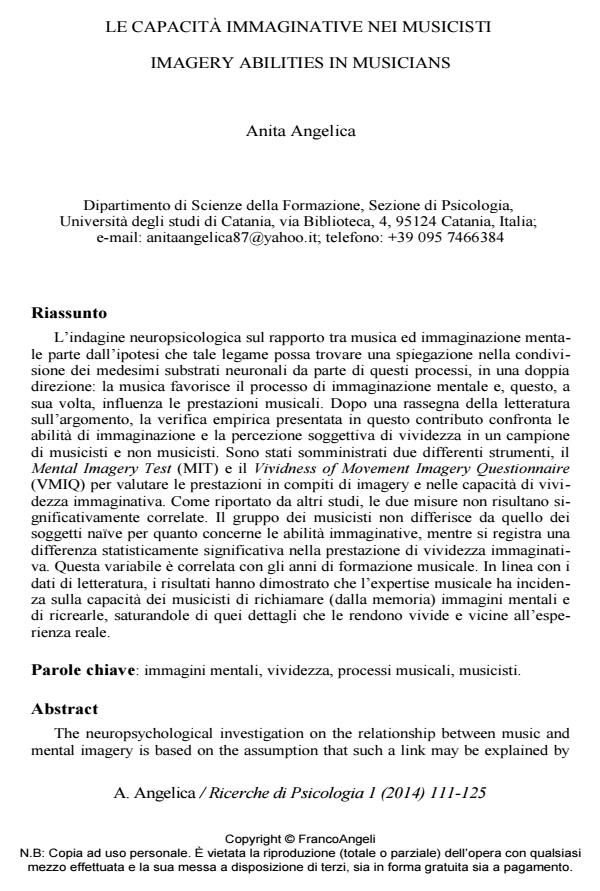Imagery abilities in musicians
Journal title RICERCHE DI PSICOLOGIA
Author/s Anita Angelica
Publishing Year 2014 Issue 2014/1
Language Italian Pages 15 P. 111-125 File size 193 KB
DOI 10.3280/RIP2014-001006
DOI is like a bar code for intellectual property: to have more infomation
click here
Below, you can see the article first page
If you want to buy this article in PDF format, you can do it, following the instructions to buy download credits

FrancoAngeli is member of Publishers International Linking Association, Inc (PILA), a not-for-profit association which run the CrossRef service enabling links to and from online scholarly content.
The neuropsychological investigation on the relationship between music and mental imagery is based on the assumption that such a link may be explained by the sharing of the same neural substrates, in a double direction: the music fosters the process of mental imagery which, in turn, affects the performance of music. After a review of the literature, the empirical study presented in this paper compares the abilities of imagination and the subjective perception of vividness in a sample of musicians and non-musicians. Two instruments, Mental Imagery Test (MIT) and Vividness of Movement Imagery Questionnaire (VMIQ) were administered to the subjects, to evaluate the performance of tasks in imagery vividness of imagination and skills. As already reported by other studies, the two measures are not significantly correlated. Musicians does not differ from naive subjects with regard to the imaginative abilities, while there was a statistically significant difference in the perception of vivid images. This variable is correlated with years of musical training. According with the previous literature, the results showed that musical expertise has an impact on the ability of musicians to recall from memory and re-creating mental images, including details that make them vivid and closer to the real experience.
Keywords: Mental imagery, vividness, musical processes, musicians.
Anita Angelica, Le capacità immaginative nei musicisti in "RICERCHE DI PSICOLOGIA " 1/2014, pp 111-125, DOI: 10.3280/RIP2014-001006